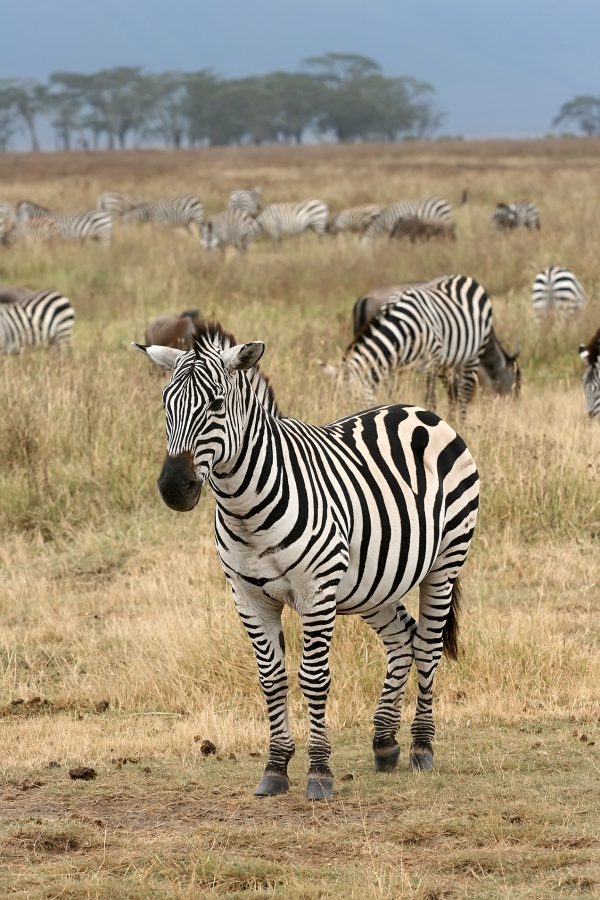Facts About Zebra
Zebras are fascinating African animals renowned for their striking black-and-white striped coats. There are three primary species: Grévy's zebra, plains zebra, and mountain zebra. Each zebra has a unique stripe pattern, which some scientists believe helps protect them from biting flies.
These animals belong to the genus Equus, sharing it with horses and donkeys, making them the only extant members of the family Equidae. Zebras inhabit a range of environments across eastern and southern Africa, including savannahs, grasslands, woodlands, shrublands, and even mountainous areas.
Primarily grazers, zebras can thrive on lower-quality vegetation. Lions are their principal predators, and zebras employ tactics like running away, biting, and kicking to defend themselves. Social behavior varies among species: plains and mountain zebras typically live in stable groups led by a dominant male, while Grévy's zebras tend to be more solitary or form loose herds. They communicate through vocalizations, body language, and facial expressions, with social grooming playing a significant role in bonding.
The origin of the name "zebra" is unclear, but it might derive from Latin, meaning "wild horse." Unlike horses and donkeys, zebras have never been truly domesticated. Conservation efforts are vital as Grévy's zebra is endangered, the mountain zebra is vulnerable, and the plains zebra is near-threatened. Unfortunately, the quagga, a type of plains zebra, went extinct in the 19th century, but zebras still thrive in protected areas.
Zebras are easily recognizable by their bold stripes, which might serve several purposes, such as camouflage, confusing predators, signaling, social bonding, temperature regulation, and fly protection. They exhibit complex behaviors related to migration, feeding, defense, social structures, communication, reproduction, and parenting. Zebras hold cultural significance in African art and beyond, frequently appearing in various forms of media and art.
While zebras have been kept in captivity for centuries, attempts to domesticate them have largely failed. Conservation is crucial due to threats like habitat loss, hunting, and competition with livestock. Protected areas play a key role in ensuring the survival of these unique and beautiful animals.

 Kenya
Kenya